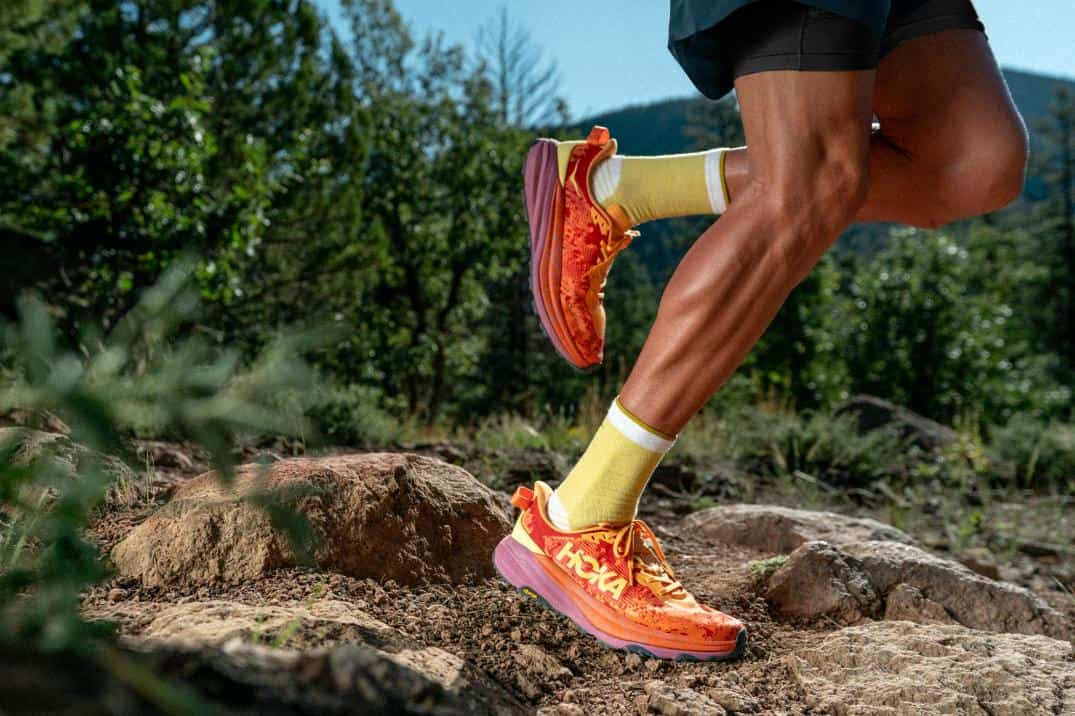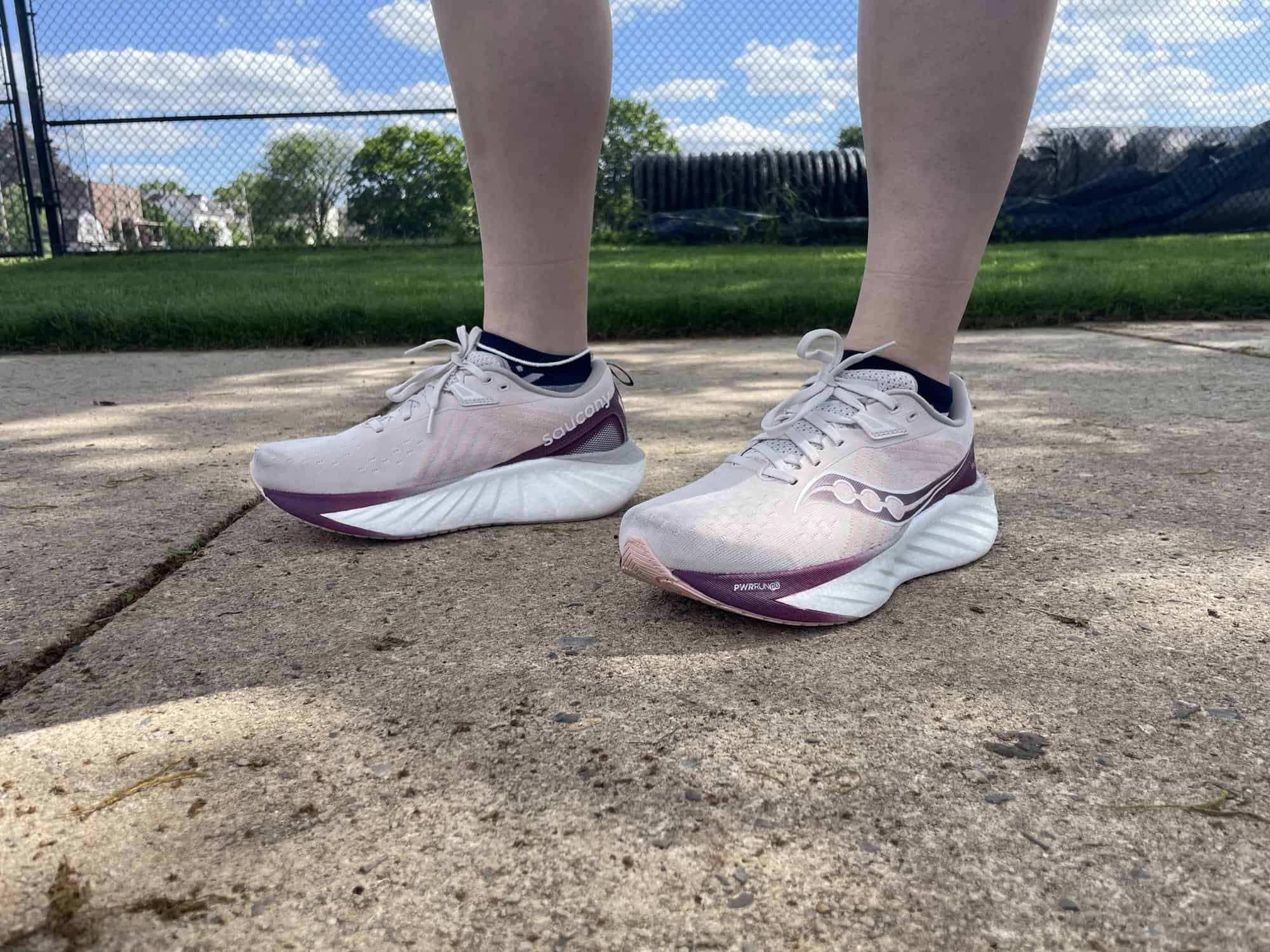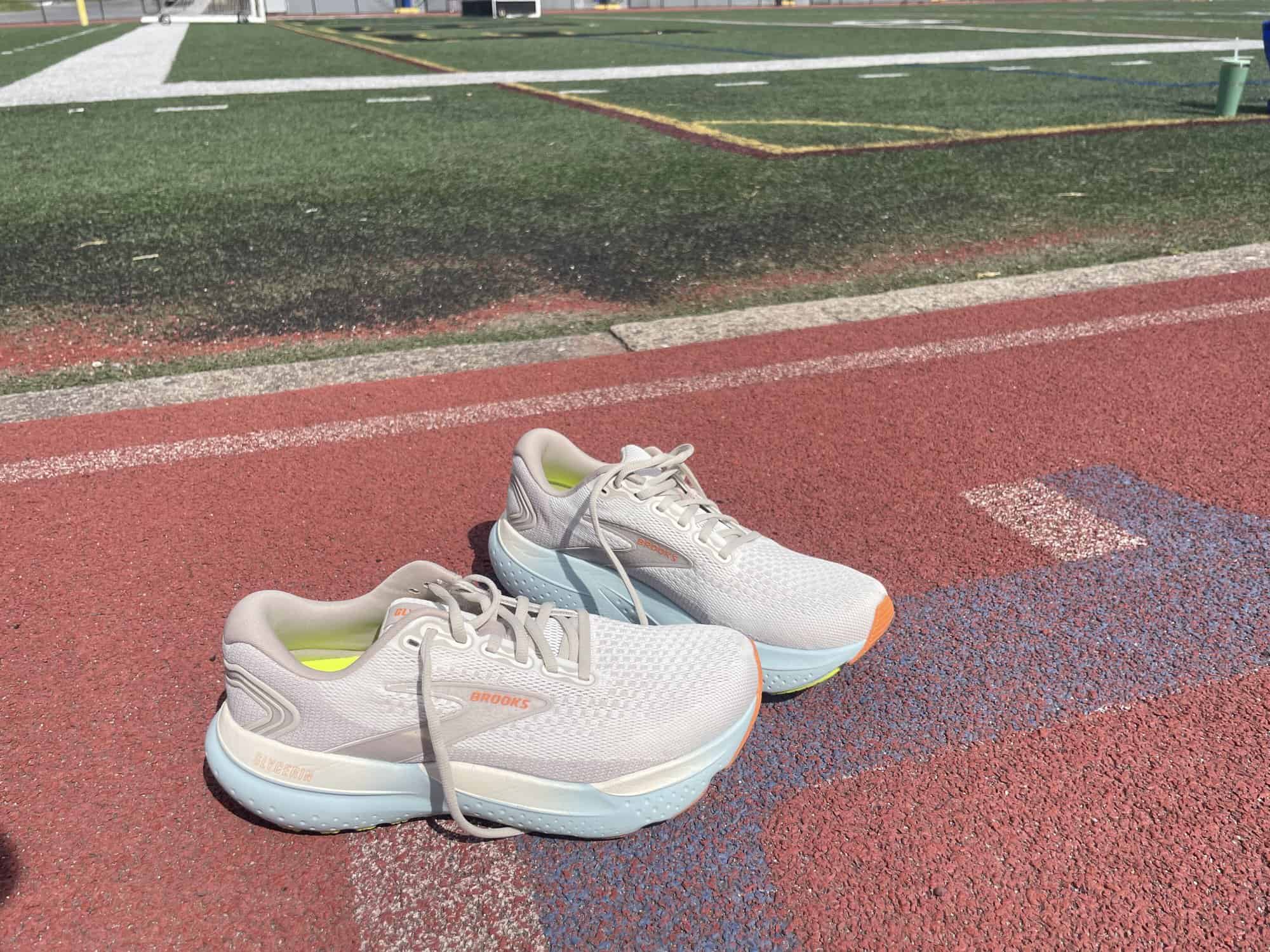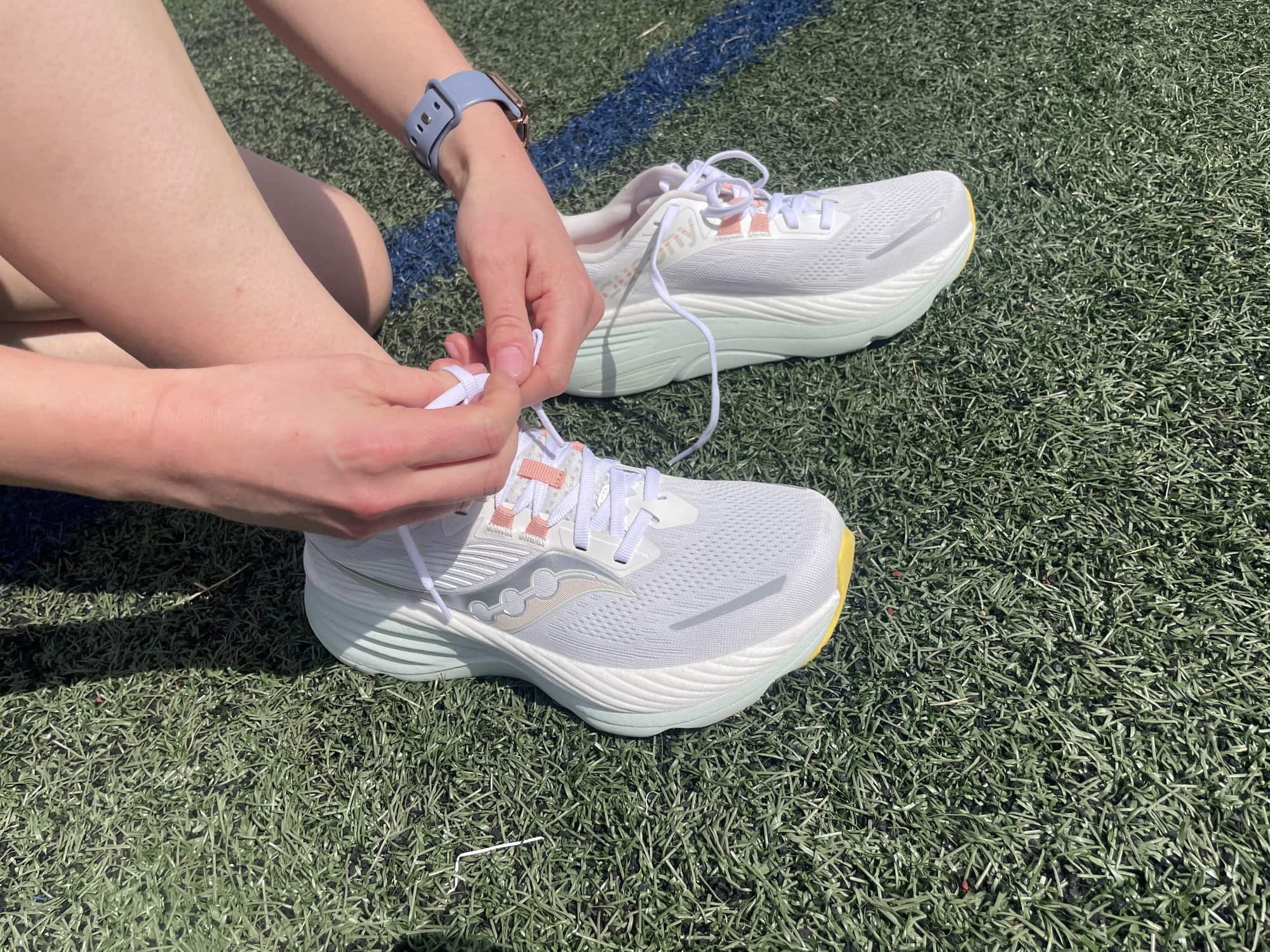When I first tried on the Antepes Muscle Runner, I felt a bit like a dog trying to figure out how to walk with socks on. There was an unnatural feeling on my feet. I felt like I had to lift comically higher with each step.
After walking in them for about ten minutes, my body adapted, like it understood the intention. Once walking felt comfortable, I lifted off into my run.
The reason the shoes felt different is because the Antepes Muscle Runner are made to feel different than any other shoe on the market. They’re designed with forefoot striking in mind, in order to build muscle and improve running efficiency.
That’s a big task and comes with a big price tag ($225). But do they work?

What is the Point of “Muscle Running?”
Before I dig into my personal experience with the shoes, I want to shine a light on how the shoes work. These unique trainers are stacked higher in the forefoot than the heel. They’re designed like this in order to help athletes train to run on the forefoot. What does that achieve?
- It reduces impact on the joints, relying more on muscle to propel you forward.
- It can strengthen underutilized muscles, especially the calf muscles.
- They enable a more efficient running form.
Antepes Muscle Runner come with a set of manuals because these are not shoes you just put on and go.
One of the manuals explains how to break in the shoes, how to warm up properly, and what types of workouts to start out with.
The shoes come with an extra stiff massage roller for pre- and post-rolling.
Another one of the manuals goes over how to use the shoes to train for different sports. For running, it recommends wearing the shoes for wicket sprints. Some examples they include are 6 x 60m sprints, 2 x 90m sprints, A-skips, B-skips, and C-skips.
What To Know About The Different Footstrikes
Why might a runner consciously choose to focus on forefoot striking if they don’t already do it?
Forefoot striking can confer a host of benefits. According to research it reduces ground reaction forces, ground reaction time, and reduces the risk of overstriding. But, what I’ve learned from researching and testing these shoes is that your natural footstrike is best. Only evaluate it further if it is causing you injury or undue pain. Basically, if it ain’t broke, don’t fix it.
If you’re not a forefoot striker, you could be a midfoot or heel striker. Heel strikers have the most impact on their joints, it may impact their running economy, and are more likely to experience knee injuries.
Mid and forefoot strikers, however, are more susceptible to ankle and achilles tendon injuries.
Forefoot Striking & Shock Absorption
“Forefoot strikers tend to rely a little bit more on shock absorption through the gastroc and the quad, so muscles tend to be a higher reliance on the shock absorption,” says Mark Bouma, physical therapist and clinic manager at Lake Washington Physical Therapy in West Seattle.
It’s not uncommon to have variation in your gait. “If you look at marathons,” says Bouma, “some of the top finishes will start as a fore- or midfoot striker, and then by the end, they’ll move into more of a heel strike. The thought is that it’s the efficiency of your stride. You use more muscle for shock absorption, which is generally a good thing for your joints. But it can only last so long, especially at a certain pace and certain distance.”
If you do want to actively adjust your gait to something more efficient, Bouma recommends focusing instead on increasing your cadence. When he instructs runners to do this, they often shift naturally from a heel strike to a midfoot strike.
“That midfoot is that sweet spot,” he says. “You’re not all on the metatarsals or the ball of the foot, but you’re landing with a foot a little flatter rather than all toes or all heels. When you speed up that cadence, you’re basically taking shorter strides, so you’re not getting your leg out in front of you as far.”

What Makes Up The Antepes Muscle Runner?
You may have heard the term ‘heel-toe-drop’ thrown around in regard to running shoes before. Expressed in millimeters, this is the difference between the thickness of the sole in the heel to the toe. Most running shoes will have a higher heel, though some like the brand Altra, sit completely flat.
The Antepes Muscle Runner are the only shoes with a negative heel-toe-drop, with the cushioned toe stack higher than the heel.
Additional foam that you’d typically find in the heel of a running shoe is noticeably missing in an effort to train your body to not rely on the rearfoot cushion.
The shoes also have a carbon plate that is flexible in the forefoot and rigid under the arch and heel. The upper is made from a comfortable and breathable blend of Merino wool and eucalyptus tree fibers. Overall, it seems to be a well-made shoe.
Specs:
- Weight: 9 ounces
- Heel-Toe Offset: -10mm (17.5mm heel, 27.5mm forefoot)
- Price: $225
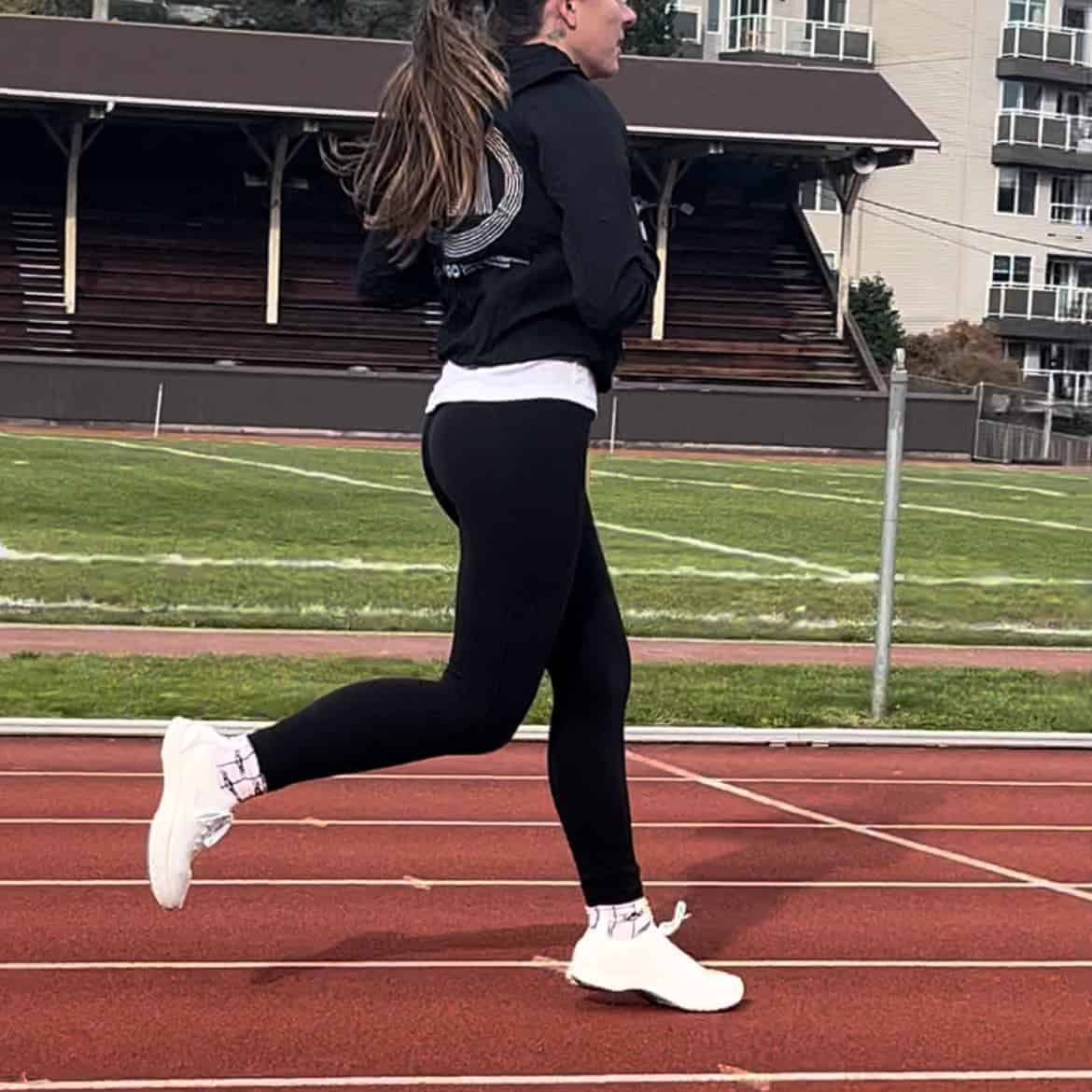
My Experience with the Antepes Muscle Runner
I am a midfoot striker. So, as I mentioned before, the shoes felt strange to me.
I also did not read the well-laid out Antepes manuals before I put the shoes on for the first time because I typically don’t need to read anything prior to trying new running shoes on.
This was a mistake.
My first run, I found myself two miles away from my starting point with intense blisters on my heels and had to get myself home still. After allowing the blisters a week to heal, I tried again, this time doing a bit more due diligence.
When I actually took the period to break in the Muscle Runners, I had no issues with the comfort of the shoes.
After the first 4+ mile run, I kept subsequent trials much shorter. I stuck to 1-2 mile training runs or speed sessions on the track. I could immediately sense the difference in my stride and feel my calves working harder. Though I wouldn’t use them as my daily trainer, I can absolutely see how the shoes can be utilized as a speed training and pseudo-strength training tool (I’d still recommend traditional in-the-gym training sessions to build whole body strength).
Experts generally don’t recommend changing your footstrike unless you have an injury or pain related to it. I currently have no qualms with my midfoot strike, so I probably won’t utilize these shoes to try and change anything permanently in that area.
If you’re already a forefoot striker, I imagine this shoe would be a hit for you.

